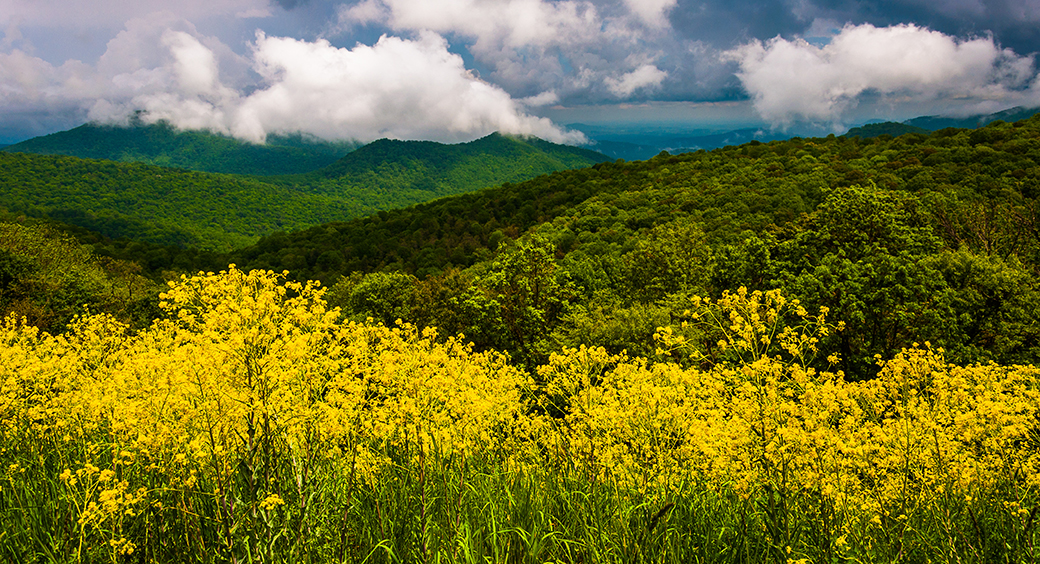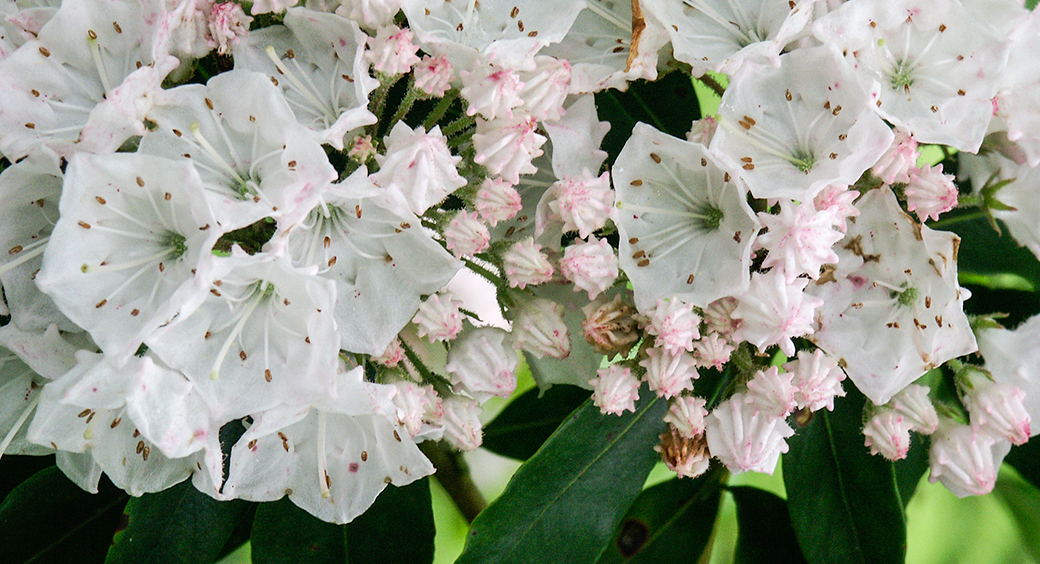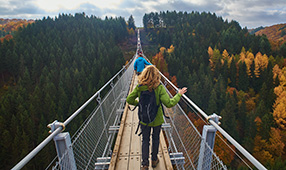Nothing says “Welcome, spring!” like cheery native blooms erupting from the warming earth. Wildflowers are getting ready to pop along these three colorful routes in Texas, Virginia and Kansas. So grab your camera and revel in nature’s beauty.
Texas Hill Country: Austin
Peak blooms: mid-March to mid-April
Carpets of bluebonnets herald the arrival of spring in the Texas Hill Country. Come March, the state flower brightens the limestone escarpments and cattle pastures along this 120-mile drive from Austin east to Chappell Hill. Begin in Austin at the Lady Bird Johnson Wildflower Center, where you can roam more than 200 acres of family-friendly gardens and grounds. The center works to preserve the nation’s native plants, including the Lone Star State’s wealth of wildflowers.

Texas Hill Country: TX-71 to La Grange
From Austin, drive east on TX-71 toward La Grange, flanked by pastures awash in bluebonnets, scarlet Indian paintbrush and pink primrose. Old stone churches and grazing longhorn cattle make for particularly picturesque settings. Check out the La Grange City Cemetery, too.
Texas Hill Country: Brenham and US-290
Wind northeast on TX-159, TX-237 and US-290 to Brenham. The 172-year-old community makes a great overnight stop with downtown lodgings such as the Ant Street Inn, and dining at the nearby 96 West. Be sure to include a stop at the Blue Bell Creamery, which churns out every Texan’s favorite ice cream. Continue east on US-290 to tiny Chappell Hill, which hosts the state’s Bluebonnet Festival in early April.

Shenandoah National Park, Virginia
Peak blooms: Varies by elevation; first blooms appear in late March
Botanists have documented more than 800 varieties of native woodland wildflowers in Virginia’s Shenandoah National Park. They add brilliant colors to what is already a dazzling drive: the 105-mile Skyline Drive that dips and soars along the spine of the Blue Ridge Mountains from Waynesboro north to Front Royal. The park’s first blooms usually appear at lower elevations, often along streams such as Mill Prong and South River.
Shenandoah National Park, Virginia: Big Meadows
Near milepost 51, a swirl of color scatters across the large natural clearing of grassy plains and wetlands known as Big Meadows. Nature trails get you close to the blooms, which include lilac-blue gentian, orange lilies and some rare wetland beauties found nowhere else in the park. The timbered Big Meadows Lodge offers accommodations and dining.

Shenandoah National Park, Virginia: Skyland
Skyline Drive climbs north toward its highest point at Skyland, elevation 3,680 feet. By late May, a riot of dark pink azaleas line much of the route. A profusion of pinkish-white flowers of Mountain Laurel follow in June. Surround yourself with blooming laurel with a stroll along the 1.3-mile, fully accessible Limberlost Trail. Or stop at one of the many scenic overlooks for a stunning view in any season.
The Flint Hills of Kansas
Peak blooms: mid-May to mid-June, August to mid-September
An ocean of wildflowers and prairie grasses greeted American pioneers as they bumped west in their covered wagons. Today you can experience the last remaining sliver of that native landscape on this 77-mile drive through the Flint Hills. Begin in Manhattan at the Flint Hills Discovery Center, filled with interactive exhibits about the prairie. At nearby Tuttle Creek Lake, trails wind past fields tinged purple and blue with blooms of penstemon and plains wild indigo.

The Flint Hills of Kansas: Konza Prairie
South of Manhattan on KS-177, the prairie unfurls across the 8,600-acre Konza Prairie Biological Station. At the peak of wildflower season in June, more than 50 species of flowers may be in bloom, including bee balm, larkspur and prickly poppy. Native animals also thrive—bees, butterflies, and even native bison, reintroduced here in the 1980s. The big mammals once again graze on big bluestem and buffalo grass, as they have for centuries.
The Flint Hills of Kansas: Tallgrass Prairie National Preserve
Continue south on KS-177 to Council Grove, the beginning of the Flint Hills National Scenic Byway. Just south of US-56, you can still see furrowed wagon ruts where the Santa Fe Trail crosses the highway. The Tallgrass Prairie National Preserve surrounds you for miles near Strong City. In late spring and early summer, the 11,000-acre preserve bursts to life with asters, sunflowers and hundreds of other plants. At the overlook a few miles south of Cottonwood Falls, wildflowers and waving grasses bend in the wind.












